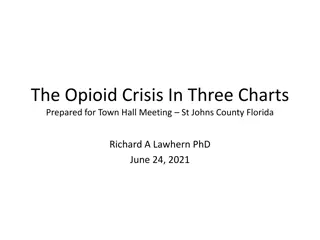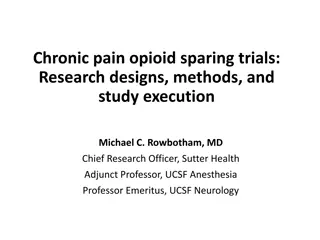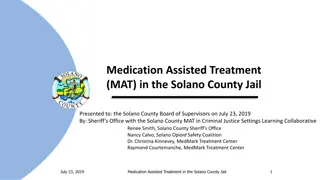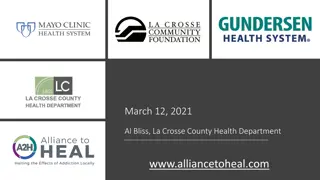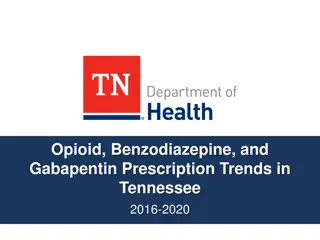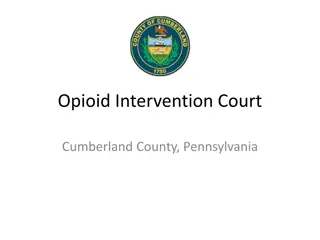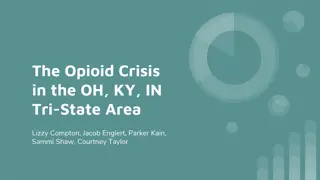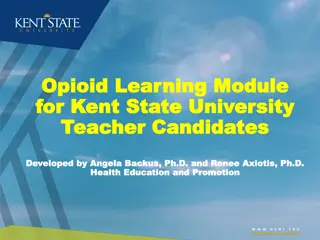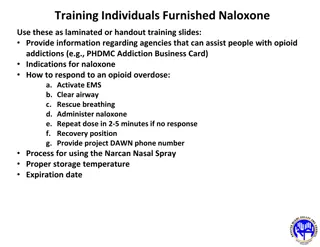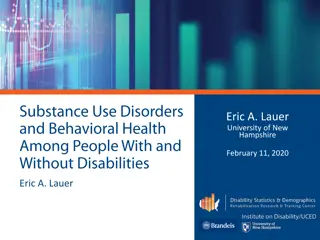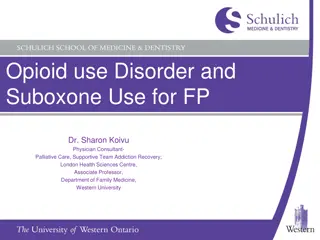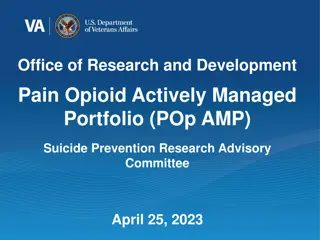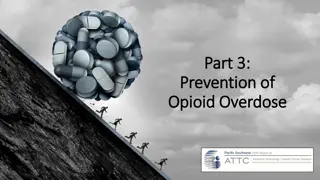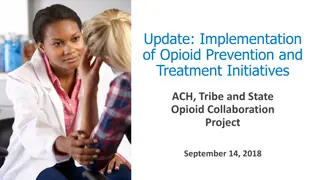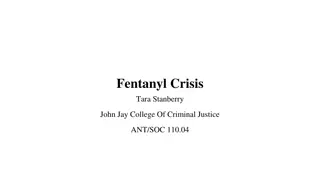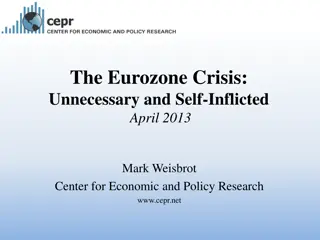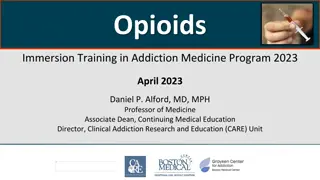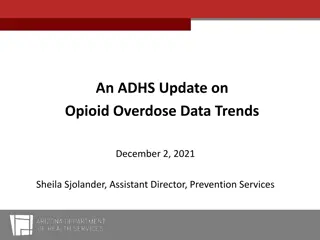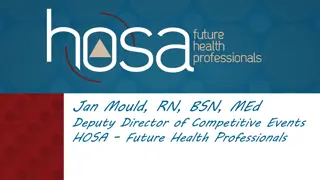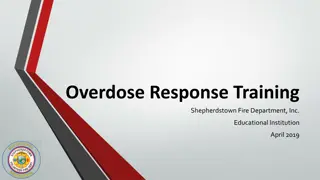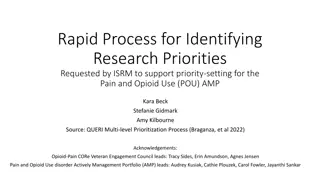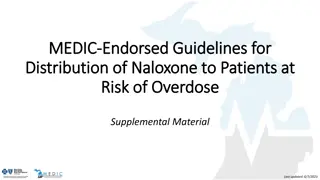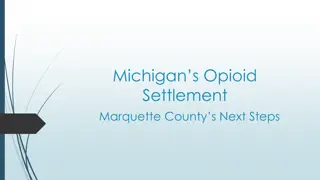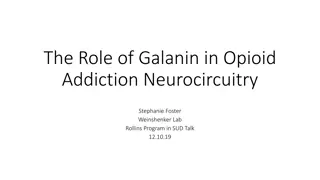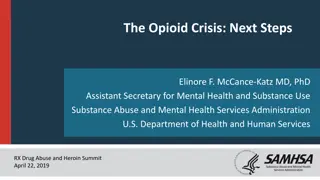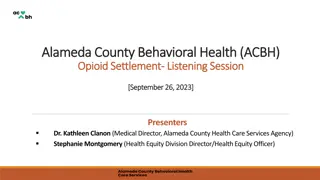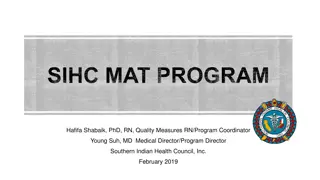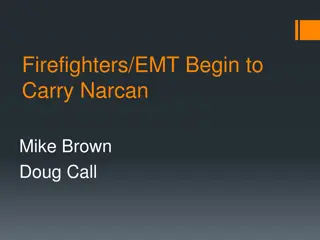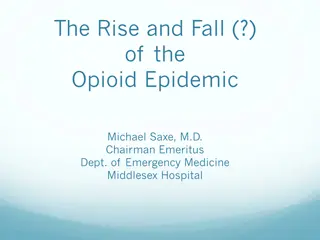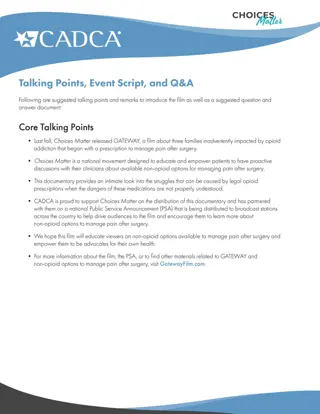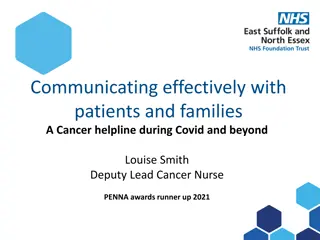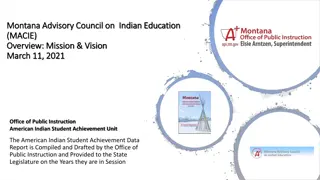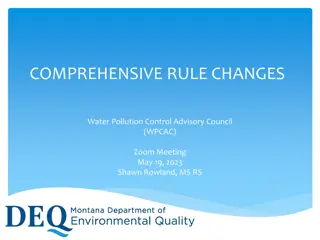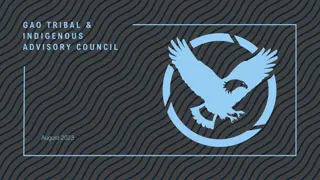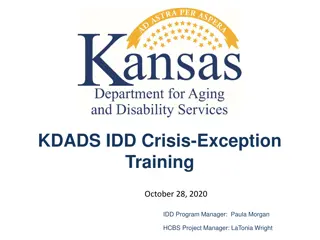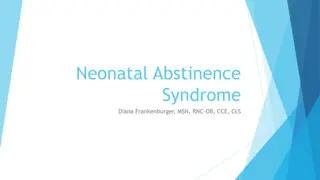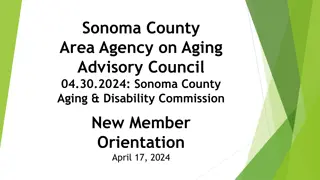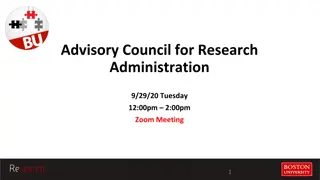Opioid Crisis Helpline Advisory Council Meeting Overview
The Opioid Crisis Helpline in Illinois offers confidential and free assistance to individuals and families affected by opioid use disorders. The helpline provides access to treatment, rehabilitation, and recovery support services, as well as referrals to comprehensive resources. Demographic data on caller age and regional distribution is also included. The helpline has received a significant number of calls and is actively promoting its services across various sectors.
Download Presentation

Please find below an Image/Link to download the presentation.
The content on the website is provided AS IS for your information and personal use only. It may not be sold, licensed, or shared on other websites without obtaining consent from the author. Download presentation by click this link. If you encounter any issues during the download, it is possible that the publisher has removed the file from their server.
E N D
Presentation Transcript
Opioid Crisis Helpline Opioid Advisory Council Meeting January 16, 2018
Illinois Helpline For Opioids And Other Substances Open 24 hours a day, seven days a week For individuals experiencing opioid use disorders, families, and anyone affected by the disease. Confidential and free. Helpline specialists are trained in evidence- based approaches to help connect callers with treatment services and recovery support services 1-833-2FINDHELP
Goals Provide individuals and families with information and timely access to opioid use disorder (OUD) behavioral health treatment, rehabilitation and recovery support services. Provide individuals and families with information and referral to a comprehensive range of OUD services and resources available to meet their needs. Assist callers with eligibility and insurance enrollment resources. Offer outreach and engagement to assist in connecting callers to care, when possible. Provide OUD behavioral health crisis intervention services.
Helpline Calls 839 Calls As of 1/11/2018 *Abandoned Calls - callers hang up before it rings through to an agent Referral Calls n=289 34% *Abandoned Calls n=300 36% **Quick Calls - inquiries where the helpline doesn t provider referrals, just people gathering information **Quick Calls n=250 30%
Caller Demographics: Age 30% 27.0% 26.6% 25% 20.8% % Of Referral Calls, N=289 20% 18.3% 15% 10% 6.2% 5% 1% 1% 1% 0% 0-17 18-19 20-29 30-39 40-49 50-59 60-69 70+ n=1 n=1 n=78 n=77 n=53 n=60 n=18 n=1
Demographic Information: DHS Regions Region 4 n= 15 5% Region 5 n= 18 6% Region 3 n= 22 8% Region 2 n= 49 17% Chicago n= 142 49% Suburban Cook n= 43 15%
Sector Hospitals Child Welfare Rehabilitation Services Substance Use Prevention/Treatment Provider Health Departments Family Community Resource Centers (Public Aid) Other Medical Overdose Prevention Law Enforcement Mental Health Schools Criminal Justice Other Social Service State Parks and Forest Preserves Boxes 225 151 113 Helpline Promotion 108 102 Boxes of 500 Business Cards 100 75 34 23 7 4 4 4 3 953 Boxes 476,500 Cards
Help Us Promote The Helpline Put graphics on YOUR site: http://www.dhs.state.i l.us/page.aspx?item=1 00039 Order Cards: http://www.dhs.state.il.u s/OneNetLibrary/27896/d ocuments/FINAL.pdf
DATA- Waivered Buprenorphine Providers and Prescribing Behavior in Illinois Opioid Advisory Council Meeting, January 2018 DHS-DASA {
Number of Data-Waivered Providers, October 2017 N= 371 39% Listed^ Unlisted^^ N= 585 61% ^Listed means the provider has given consent to be publicly listed in the SAMHSA provider locator. ^^Unlisted means the provider has opted out/ not granted consent to be listed in the SAMHSA provider locator.
Prescribing Status of Data-Waivered Providers in Illinois, October 2017 N= 252 26% Active* Inactive** N= 591 62% Never, Waiver Only N=113 12% *Active means having prescribed buprenorphine within the past year. **Inactive means a providers who has prescribed buprenorphine, but not within the past year.
Prescribing Status vs. Patient Capacity, October 2017 45% 30 patient capacity 41% 40% 100 patient capacity 35% 275 patient capacity 30% 25% 25% 20% 16% 15% 10% 10% 5% 5% 1% 1% 0% 0% 0% Active n=591 Inactive Never, Waiver Only n=252 n=113 *Active means having prescribed buprenorphine within the past year. **Inactive means a providers who has prescribed buprenorphine, but not within the past year.
Prescribing Activity vs. Locator Consent, October 2017 50% 43% Listed^ 45% 40% Unlisted^^ 35% 30% 25% 19% 20% 14% 12% 15% 10% 6% 6% 5% 0% Active Prescriber* Inactive Prescriber** Never, Waiver Only n= 411, 180 n=57,56 *Active means having prescribed buprenorphine within the past year. **Inactive means a providers who has prescribed buprenorphine, but not within the past year. ^Listed means the provider has given consent to be publicly listed in the SAMHSA provider locator. ^^Unlisted means the provider has opted out/ not granted consent to be listed in the SAMHSA provider locator.
Next Steps: Prescriber Survey Questions 1. How many patients have you been data-waivered to treat with buprenorphine/Suboxone? 2. What is your practice setting? 3. Are you currently prescribing buprenorphine/Suboxone? If not, why not? 4. Are you accepting new patients? If not, why not? 5. Do you accept any Medicaid Plans for buprenorphine/Suboxone treatment? 6. On average, how much do patients pay for out-of-pocket expenses with insurance? Without? 7. Are you listed in the SAMHSA locator? If not, why not? 8.Are you currently offering injectable naltrexone (Vivitrol)? Are you interested in becoming a provider?


